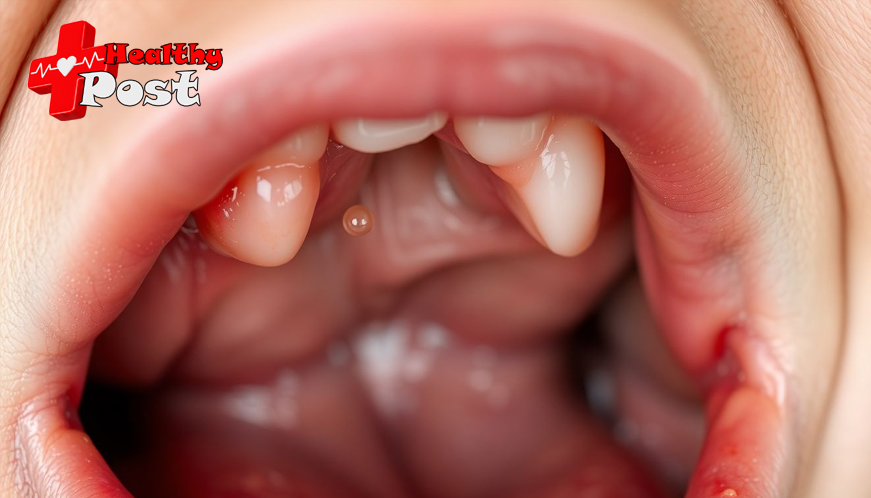
Hole in Gums: Causes, Symptoms, and Effective Treatment Options
Your mouth is a window to your health. Many people worry about toothaches and cavities, but gum issues can be just as serious. One concerning problem is a hole in the gums, which can signal deeper dental health issues. Spotting it early and seeing a dentist can make all the difference in avoiding more serious complications. Keeping your gums healthy isn’t just about brushing; it’s about paying attention to signs like holes or holes that don’t heal.
Understanding Holes in Gums
What Is a Hole in Gums?
A hole in the gums looks like a small crater or opening in the soft tissue around your teeth. It can appear as a tiny puncture or a deep hole that’s sometimes visible when you look in the mirror. These openings often vary in size but can be quite noticeable if they become large or infected. The tissues around the hole may look red, swollen, or even pus-filled.
Common Terminology and Related Conditions
You may hear terms like gum abscess, fistula, or periodontal pocket when talking about gum holes. A gum abscess is a pocket of pus caused by bacterial infection, often seen as a swelling with a hole draining pus. A fistula is a narrow tunnel connecting an infection inside the gums to the surface, sometimes appearing as a pimple. Periodontal pockets are spaces that form when gums pull away from teeth, creating gaps that may look like holes. Recognizing the difference helps determine the right treatment.
How a Hole in Gums Develops
Holes form gradually as bacteria damage gum tissue or bone. Plaque buildup, left untreated, breeds bacteria that invade the gums. Over time, tissue begins to break down, resulting in holes or pits. If bacteria infect deep beneath the gums, they can erode the tissue, causing the skin to form a perforation. Sometimes, an untreated infection can turn into an abscess which may drain through a small opening—creating a hole.
Causes of Holes in Gums
Periodontal Disease
Gum disease, especially in its advanced stages, breaks down the structure supporting your teeth. As gums and bone weaken, holes or pockets develop. Nearly 50% of adults over 30 experience some form of gum disease, making it a common cause for holes in gums. If ignored, it can cause significant tissue loss and tooth mobility.
Dental Abscesses and Infections
Abscesses often come from untreated cavities or gum infections. They create painful swelling and pus-filled pockets that can rupture, leaving a hole. An abscess is a clear sign that bacteria have invaded deep tissues. If not treated, the infection may spread and destroy surrounding structures.
Trauma and Injury
Accidents happen—biting into something hard or having a fall can damage your gums. A strong blow or accidental bite may cause a tear or hole in the soft tissue. Dental procedures like extractions or implants can also unintentionally create openings. Proper care after these activities is essential to prevent complications.
Other Contributing Factors
Poor oral hygiene encourages plaque buildup, which can lead to gum inflammation and holes. Smoking reduces blood flow to gums, slowing healing and increasing infection risks. Systemic problems like diabetes weaken the immune system, making it easier for infections to cause tissue damage.
Signs, Symptoms, and When to Seek Help
Typical Symptoms of a Hole in Gums
You might notice a small hole or crater in your gums, along with pain. Swelling and redness often surround the opening. Sometimes, there’s bleeding when brushing or flossing. A foul smell or taste in your mouth can also indicate infection or pus drainage.
Recognizing Serious Cases
Persistent pain, swelling that spreads, or a fever are signs of a more serious problem. Loose teeth or shifting position may also appear. If you experience increasing sensitivity or notice shrinking gums, it’s time to see a professional. Ignoring these symptoms can lead to tooth loss or more severe infections.
Importance of Professional Dental Evaluation
You shouldn’t try to diagnose or treat a gum hole yourself. Dentists have the tools and knowledge to identify the cause. Early visits reduce the risk of long-term damage and help maintain your overall oral health. Consulting a dentist at the first sign of trouble is crucial to prevent further complications.
Diagnosis and Dental Examination
Clinical Examination Procedures
Your dentist will start with a visual inspection, looking for signs of swelling, pus, or visible holes. They may gently probe your gums to check for pockets or loose tissue. Palpating the area helps determine if there’s active infection or abscess.
Imaging Techniques
X-rays reveal hidden issues beneath the gums, like bone loss or deep abscesses. They help confirm whether infection has reached the bone or if cysts or tumors are involved. These images guide the best treatment plan.
Differential Diagnosis
Sometimes, a hole might look like a cyst or tumor. Dentists distinguish between these conditions by examining tissue samples or imaging results. Knowing the exact cause ensures the right treatment, saving your gums and teeth.
Treatment Options for Holes in Gums
Professional Dental Treatments
Cleaning and scaling remove plaque and tartar, promoting healing. More advanced procedures include gum surgery to close or remove damaged tissue. Flap surgeries lift gums away from teeth, allowing deep cleaning and repair.
Managing Infections
Antibiotics and antiseptic rinses are often prescribed to fight bacteria. They help control infection and reduce swelling. Follow the dentist’s instructions carefully to prevent antibiotic resistance or relapse.
Surgical Interventions
In some cases, tissue grafts are necessary to fill holes and regenerate lost tissue. Cyst removal or root canal therapy may be needed if infection reaches inside teeth. These procedures restore health and function.
Home Care and Preventative Measures
Good oral habits are key. Brush twice daily, floss regularly, and avoid hard or sticky foods. Quitting smoking and managing health issues like diabetes boost healing. Regular visits keep your gums in check. Using antimicrobial mouthwashes can also help reduce bacteria between dental visits.
When to Consider Specialized Care
If your problem is complex or doesn’t improve, a specialist such as a periodontist or oral surgeon may be needed. They have advanced skills and tools to treat severe cases effectively.
Preventing Holes in Gums
Oral Hygiene Best Practices
Brush thoroughly twice a day with fluoride toothpaste. Floss daily and use interdental brushes for tight spaces. Professional cleanings every six months remove plaque and tartar buildup early.
Lifestyle Factors
Eat a balanced diet rich in vitamins and minerals for your gums. Avoid smoking or chewing tobacco, which impairs healing. Control systemic conditions like diabetes to reduce infection risk.
Regular Dental Visits
Routine dental exams help detect early signs of gum issues. Early treatment saves money, time, and your smile. Don’t skip checkups—your gums will thank you.
Educating Patients
Knowing the signs of gum problems helps you act fast. Seek information from dental health resources or campaigns. The more you know, the better you protect your mouth.
Conclusion
Holes in gums should never be ignored. They often result from serious conditions like gum disease or infections. Recognizing symptoms early and seeking professional care can save your teeth and gums. Keeping good oral hygiene and visiting your dentist regularly form the best defense. Don’t wait for the problem to worsen—if you see or feel a hole, make an appointment today for a healthy, happy smile.

